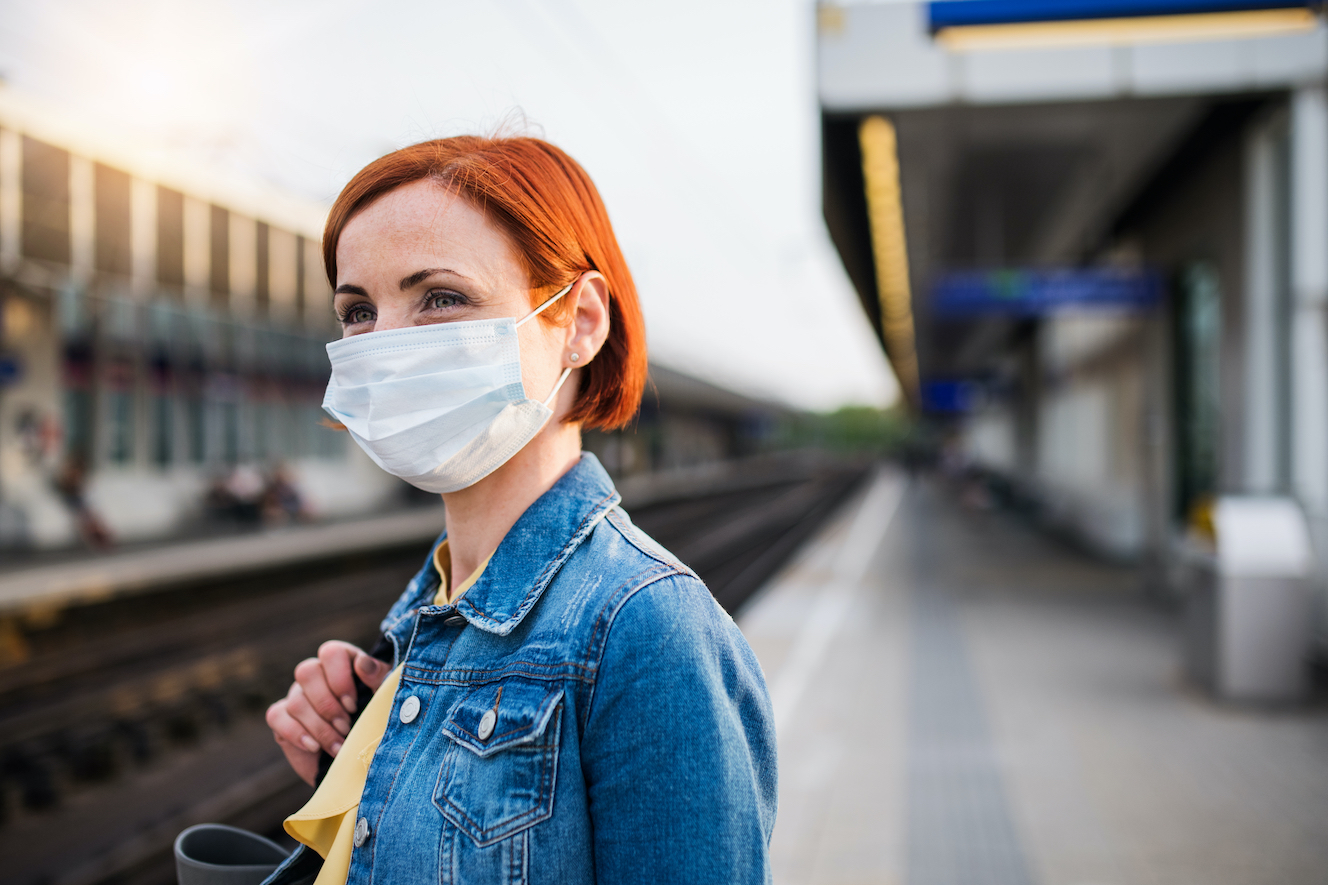
In a year of cautious optimism, rescheduled plans, changing restrictions and requirements, and hope for the holidays, travelers have had their persistence and resilience tested. And yet, many have been willing to do what it takes—test pre-departure; test on arrival; show proof of vaccination; reschedule—to get back out on the road and in the skies.
Over the course of 2021, we conducted quarterly surveys of American travelers, plus analyzed our booking data for six major U.S. holidays—Memorial Day, Fourth of July, Labor Day, Thanksgiving, Christmas, and New Years—to understand not only how travelers feel about traveling during a pandemic, but also what types of trips they’re booking as well as when (and how) they’re actually traveling.
Looking back across these myriad data points, four travel behaviors rose above the rest. Here are the top trends that shaped the world of travel this year.
1. Road trips and rental car bookings reigned
2021 was the year of the road trip—and the rental car. Americans hit the road in record numbers, and rental car booking data reflected this surge in travel behavior.
Back in March, when vaccine rollouts were just picking up steam in the U.S., we predicted that road trips were likely to reign as the preferred mode of transport for summer travel. At that time, 83% of Americans said they’d be ready for a road trip with a personal car, and 60% said they’d be ready to take a road trip with a rented car or RV, by June of this year.
In particular, of those planning to travel:
- 64% of travelers planned to drive for Memorial Day.
- 64% planned to drive for Fourth of July.
- 61% planned to drive for Labor Day.
What we saw in our data
If rental cars were a stock, you’d be happy with your end-of-year return on investment, as booking numbers soared (and soared) over the course of 2021.
Our booking data showed that rental car reservations for Memorial Day 2021 were 220% of 2020 levels. And those numbers remained elevated not just during the summer road trip surge for Fourth of July (262%) and Labor Day (413%), but also for Thanksgiving (390%), as well as Christmas and New Years (404%).
2. Traveler confidence and concerns ebbed and flowed
While rental cars were like a rocket ship, the process of traveling itself was more like a rollercoaster. Indeed, travelers had to comply with constantly changing travel restrictions and requirements—sometimes with only a few days’ notice.
The ebbs and flows of the pandemic—dynamic infection rates, vaccination campaigns, changing requirements, and in particular, new variants—all played their parts in shaping travelers’ levels of confidence and concern.
In March, 54% of travelers said airlines having procedures in place to reduce infection spread, such as mask requirements, reduced capacity on flights, sanitation procedures, and temperature checks, contributed to their confidence in returning to air travel.
In addition, 50% of travelers said airport procedures—that is, social distancing guidelines, touchless check-in procedures, mask requirements, and sanitation procedures—helped them feel more comfortable taking a flight.
By May, when 93% of our survey respondents had been vaccinated or planned to get vaccinated, survey data revealed that travel concerns were generally reducing. Less than one quarter of all respondents expressed concern about each of the myriad aspects of travel.
Of those travelers who did express concerns, staying current on travel restrictions and guidelines and knowing how to modify reservations were the top concerns—with the latter down 21% from our survey in March. Concerns around understanding vaccine and infection rates and infecting friends or family upon returning from a trip were also down, dropping 27% and 47%, respectively.
May data did reveal a new concern: One in four travelers said uncertainty about the rules for those who are and aren’t vaccinated concerned them about the next time they traveled.
In August, survey data showed travelers’ comfort level with flying continued to increase; those comfortable flying in conditions (at the time) was up nearly 79% since May. And while remaining a top need, airline safety measures’ importance dropped 29%—thanks to vaccines (more on that, below).
But by October, the Delta variant had put traveler confidence on its heels—with many Americans (26%) booking trips they were prepared to cancel or change. A quarter of travelers (25%) said they were holding off making plans due to the Delta variant.
That’s not all the Delta variant changed. Our October survey data showed that nearly half of travelers (47%) said in order to feel comfortable flying they would need proof of vaccination or a negative COVID-19 test required for passengers. Forty-two percent of travelers wanted to see airlines continue or increase their safety measures, such as mask requirements and COVID-19 testing mandates. In addition, more than a third (38%) of travelers said requiring vaccination or COVID-19 testing for airline employees would make them feel comfortable flying. (Soon after that survey was fielded, many U.S. airlines began doing just that.)
Travel-related concerns looked different then, too. More than a third of travelers (37%) said their top concern was whether they might need to cancel or reschedule a trip due to COVID-19 restrictions, requirements, or illness. Staying up to date on travel restrictions, guidelines, and requirements came in second, with 35% of travelers expressing concern about this.
And yet, despite Delta (and Omicron) concerns, our booking data showed strong returns to air travel for Thanksgiving (298% of 2020 volume), as well as Christmas and New Years (320% of 2020).
3. Vaccines boosted Americans’ confidence
It wouldn’t be 2021 if we didn’t talk about vaccine rollouts and the subsequent influence of vaccination status on the world of travel.
Back in March, we asked Americans if vaccines were influencing their confidence to return to travel. At the time, 59% of travelers said news about the progress of the vaccine made them more likely to book travel. Thirty-five percent of travelers said they would wait to fly again until they got vaccinated. Just 8% of travelers said a vaccine would not change their willingness to travel.
In May, our survey data showed that almost half (47%) of respondents planned to travel more than or about the same as they did prior to COVID-19.
For those who planned to travel more, vaccines were the top reason people felt comfortable traveling. Our survey data also showed being vaccinated was the top need for travelers to feel comfortable flying (56% of travelers), outranking herd immunity at 37%.
We asked those travelers who had both been vaccinated, as well as those who had not yet been vaccinated at the time of the survey—but were planning to be—about their intended travel plans, 68% of respondents who’d been vaccinated said they had booked a trip since getting their shot(s) or planned to book soon; 66% said they planned to book a trip after being vaccinated.
How did Americans feel about vaccine passports?
Sentiment in our surveys towards digital health passports (also called a health pass, vaccine passport, or COVID vaccine passport) remained consistent throughout the year.
In March, the prospect of some type of digital health passport that provides proof that you’ve been vaccinated appealed to 81% of travelers. Those travelers said they’d be willing to use a digital health passport if it meant they could travel freely.
When we asked travelers in August if they would use a digital health passport and how they felt about it (love, like, dislike, hate), 84% said they would use one, regardless if they loved the idea (49%), liked the idea (18%), or disliked the idea (16%). Just 16% of respondents said they hated the idea of a digital health passport and would not use one.
In October, 60% of Americans (who had traveled in the past six months) said they had carried their CDC COVID-19 vaccination card with them on a trip and 15% used a vaccine passport app for their trip.
4. Vacations were (consistently) all we ever wanted
The reason why Americans were willing to jump through all those hoops and comply with myriad requirements? One word: vacations.
Indeed, since the start of the year, vacations were the consistent, number one reason Americans planned to travel.
Here’s what travelers told us:
- In March, of those planning to travel in 2021, 73% planned to take a vacation.
- By May, that number rose slightly to 77% of Americans planned to take a vacation.
- By August, 87% planned to take a vacation—up 10% from our prior survey.
- By October, 77% said they planned to take a vacation in the year ahead (still the top reason).
As for where Americans traveled to for vacation, our data showed a number of trends for the year:
- The warmer climes of Hawaii, California, and Florida were top destinations across 2021. This trend kicked off over Memorial Day weekend and continued through to the end of the year.
- With a nod to 2020, outdoorsy locales continued to shake up the destination rankings. Places like Moab, UT; Anchorage, AK; Yellowstone, WY; and Colorado Springs, CO, were popular with American travelers.
- While major metros (Las Vegas, New York, Chicago, and the like) started the year down, by Labor Day they were back to claim their numbers one, two, and three spots (respectively) for accommodation bookings.
The world of travel in 2021 was shaped by the ebbs and flows of the pandemic. While we can’t yet say what travel in 2022 will look like, we’re confident Americans will continue to do what it takes to see (their corner of) the world—perhaps by rental car, but definitely for vacation—with vaccination card, face covering, negative test results, and travel documents du jour in hand.

